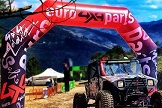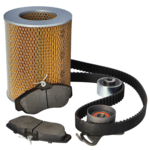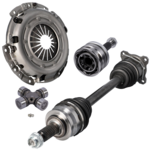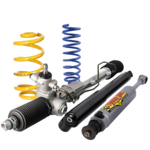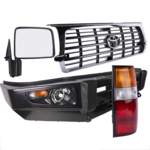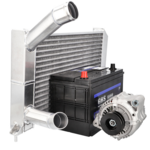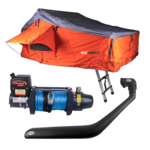In this article we're going to focus on the technical details to help you when choosing the right LED lights for you & your 4x4.
What is a LED?
The LED (Light Emitting Diode) are now fitted on new vehicles, especially for daytime running lights (mandatory since 2011). It offers three main advantages: ultra-fast ignition, low power consumption and a long life (equivalent to that of the car). LED lighting does not use a bulb, give high intensity output and are highly efficient (more Lumens per Watt). The light is described in terms of "colour temperature" which is measured in degrees Kelvin.

Light power: Lumens
Lumens are used to indicate the light output of an LED bulb.
Lumens = luminous flux
Lumens (lm) are a measure of the amount of total visible light from a lamp or light source. The higher the number of lumens, the brighter the bulb / lamp.
LEDS - more light - less energy (Watts).
LED lamps consume less energy for more light output. For example, a 6.5W LED bulb will produce a similar light to a 50W halogen bulb. This translates as 87% less energy for the same amount of light. With LEDs, energy is transformed into light and not into heat. Thanks to constant innovation, we can now consume less and less energy and we will produce more and more lumens for less Watts.
Colour Temperature: Kelvins
When choosing an LED headlight, be careful too consider the colour temperature and not just the amount of light it emitted (Lumens). This is expressed in Kelvin and tells you about the quality of the light. That is to say, both its colour and the effect it produces. Kelvin (K) measures the color of light perceived by the human eye.
5000 K is daylight, 2000 K is a warm (amber) color.
Protection class: IP
One of the first things to look when light is described as tough, waterproof, etc is its international protection index, known as the IP Rating. This is a code consisting of the letters IP followed by one or two digits. The two most common indicators for electronic devices are IP67 and IP68.
IP codes are standards established by the International Electrotechnical Commission (IEC). According to the IEC, these codes are used to designate the amount of protection against solid and liquid intrusion. The first digit of the IP code represents the degree of protection against the intrusion of solid foreign objects such as fingers or dust. This index ranges from 0 to 6. The second digit of the code represents the degree of protection against the intrusion of moisture with an index ranging from 0 to 8.
The format of the index given by the IEC 60529 standard, for example: IP 67. The IP is followed by two numbers:
1st digit (ten) = protection against dust.
2nd digit (unit) = protection against water and liquids.
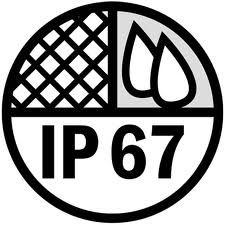
The IP67 standard corresponds to a product that is totally dust and waterproof to a depth of one meter for 30 minutes.

The IP68 standard corresponds to a product that is totally dust and waterproof to a depth greater than one meter for 30 minutes.
Spot, flood ou combo?
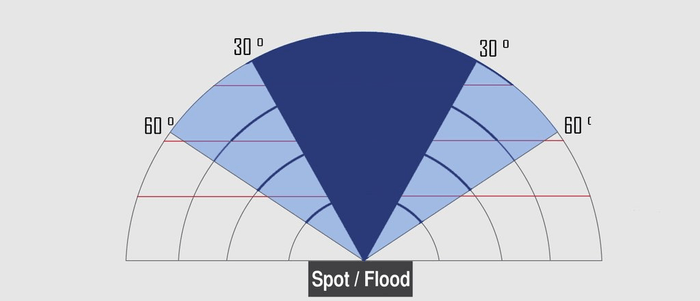
Spot or flood:
Spot is concentrated further reaching beam pattern;
Flood is wider beam pattern used to illuminate broadly and not as far.
Combo:
This kind of LED light bar or lamp combines central spot type LEDs with flood style LEDs.
Choose the right LED for you & your 4x4:
We'd love to hear from you!
If you have a question about this or any other of our articles ,or any suggestions please feel free to get in touch.
Do it yourself, you'll be even prouder! To help you out, Euro4x4parts shares its know-how and expertise in mechanics through 4X4XPERT: new products, technical sheets, and personalized tutorials... You've got the keys!
And because we also learn from your experiences, your feedback is essential. Let us know your thoughts and suggestions by email: 4x4xpert@euro4x4parts.com
Check out our complete catalogue of 4x4 parts and accessories!
All the photos in our articles are taken on authorized roads or tracks, private land, or during supervised competitions. Let's all do our part to preserve the environment!
Please note: Euro4x4parts publishes this information to help its customers, but cannot be held responsible for the advice given here and their consequences when used.
